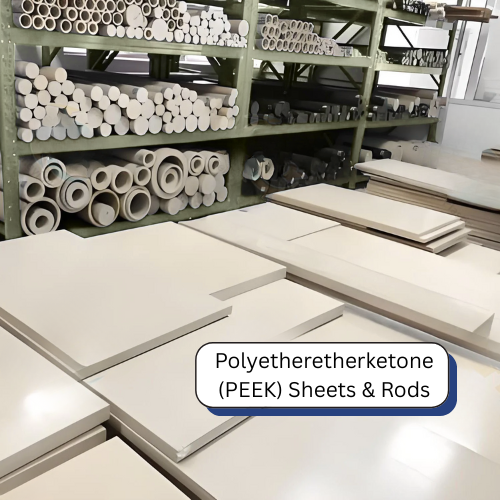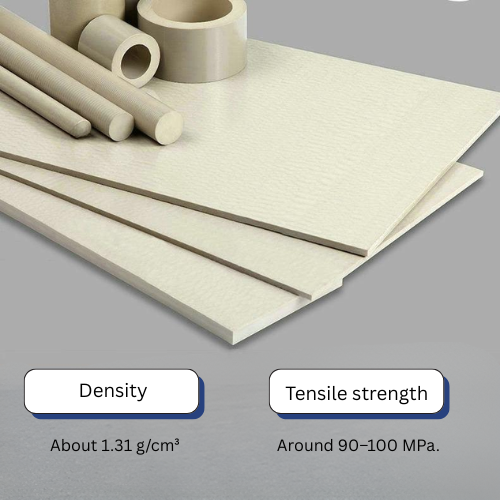What are Polyetheretherketone (PEEK) Sheets & Rods?
Polyetheretherketone, commonly called PEEK, is a high-performance engineering thermoplastic known for its strength, stability, and resistance to extreme conditions. PEEK sheets and rods are preferred in industries like aerospace, oil and gas, and medical manufacturing due to their ability to perform consistently under high stress, heat, and chemical exposure. Whether used for machining parts or structural applications, PEEK offers reliability where ordinary plastics can’t compete.
PEEK materials are often used across industries in the Middle East, such as Sharjah, Dubai, and Qatar. These countries have demanding environments that require products that can handle high temperatures, heavy loads, and exposure to harsh chemicals.
What are the features of PEEK?
PEEK sheets and rods are built for tough industrial and engineering use. Here’s what makes them reliable:
- High Temperature Resistance: PEEK retains its mechanical properties at temperatures up to 250°C and does not soften or deform easily.
- Strong and Stiff: It provides high tensile and flexural strength, making it reliable for load-bearing applications.
- Chemical Resistance: Resistant to most organic and inorganic chemicals, including oils and fuels, which ensures longevity in chemical processing environments.
- Excellent Dimensional Stability: Maintains tight tolerances even after prolonged exposure to heat or moisture.
- Low Friction and Wear: Suitable for applications that demand low wear and long service life, like bearings and bushings.
- Good Electrical Insulation: Its dielectric properties make it suitable for electrical and electronic parts.
- Machinability: Can be easily machined into precision components using standard metal-working tools.
- Hydrolysis Resistance: Withstands continuous exposure to hot water and steam, unlike many other plastics.
Applications
PEEK sheets and rods are used in a wide range of industries for their strength, heat resistance, and chemical stability. In aerospace, they are used in engine and cabin parts where low weight and durability are important. Automotive manufacturers use them for gears, seals, and under-hood components exposed to high temperatures. In oil and gas, PEEK is used for valve seats, connectors, and sealing rings that handle pressure and chemicals..
Due to its biocompatibility, it is used in the medical field for implants and surgical tools. It is also applied in electrical components as insulators and connectors and in industrial machinery for bushings, bearings, and pump parts that need long life and low maintenance.
How to Use?
PEEK sheets and rods are flexible to design and work with, whether for prototypes or full-scale production.
- Use standard cutting and machining tools such as carbide-tipped or diamond-coated tools for precision shaping.
- For high-accuracy components, pre-dry PEEK materials at 120°C to remove moisture before machining.
- When bonding, ensure surfaces are clean, and use compatible high-performance adhesives for the best results.
- For applications needing thermal forming, heat PEEK gradually and allow controlled cooling to prevent internal stress.
- Always handle with care during machining to avoid contamination of medical- or food-grade components.
- Use filled PEEK (glass- or carbon-filled) for applications demanding extra stiffness or wear resistance.
Safety Guidelines
For proper and safe handling of PEEK sheets and rods, follow the steps given below.
- Avoid overheating beyond 360°C to prevent thermal degradation.
- Use protective eyewear, gloves, and masks while machining to prevent dust inhalation.
- Operate in a well-ventilated area, especially during heat processing.
- Handle machining chips carefully; sharp edges may cause cuts.
- Store sheets and rods in a cool, clean, and dry environment, away from direct sunlight.
- Dispose of scrap or offcuts according to local industrial waste regulations.




